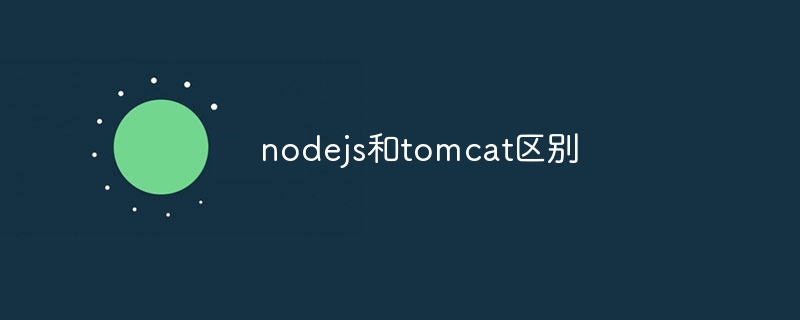The main difference between Node.js and Tomcat is: Runtime: Node.js is based on JavaScript runtime, while Tomcat is a Java Servlet container. I/O model: Node.js uses an asynchronous non-blocking model, while Tomcat is synchronous blocking. Concurrency handling: Node.js handles concurrency through an event loop, while Tomcat uses a thread pool. Application scenarios: Node.js is suitable for real-time, data-intensive and high-concurrency applications, and Tomcat is suitable for traditional Java web applications.

The difference between Node.js and Tomcat
Node.js and Tomcat are two popular technologies. For building and deploying web applications. Although they are both platforms for web development, they have different features and application scenarios.
Main differences:
- ##Runtime: Node.js is a JavaScript runtime environment based on the Chrome V8 JavaScript engine. Tomcat is a Java Servlet container used to execute Java web applications.
- Asynchronous non-blocking: Node.js adopts an asynchronous non-blocking I/O model, which can handle multiple requests at the same time, thereby improving throughput. Tomcat is synchronously blocking, and the processing of one request will block the execution of other requests.
- Concurrency processing: Node.js achieves high concurrency processing through the event loop mechanism, and each request is processed by an independent thread. Tomcat uses a thread pool to handle concurrent requests with a limited number of threads.
- Application scenarios: Node.js is suitable for real-time, data-intensive and high-concurrency applications, such as chat rooms, API microservices and data stream processing. Tomcat is suitable for traditional Java web applications, such as enterprise applications and content management systems.
Specific differences:
Advantages:
- Node.js: Fast response, high throughput, easy to develop, cross-platform support
- Tomcat: Stable and reliable, widely supported, well integrated with the Java ecosystem
Disadvantages:
- Node.js: Inefficient for CPU-intensive tasks, lack of built-in support for static file serving
- Tomcat: Synchronization blocking, high resource consumption, complex configuration and management
Selection factors:
Whether you choose Node.js or Tomcat depends on Application requirements and limitations:
- Highly concurrent, real-time applications: Node.js
- Traditional Java web applications: Tomcat
- Resource efficiency: Tomcat
- Cross-platform support: Node.js
- Developer preferences and skills : If the developer is proficient in JavaScript, Node.js is more suitable; if the developer is more familiar with Java, Tomcat is more suitable.
The above is the detailed content of The difference between nodejs and tomcat. For more information, please follow other related articles on the PHP Chinese website!






